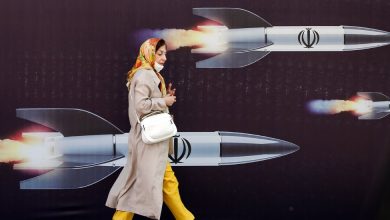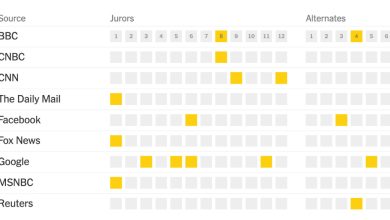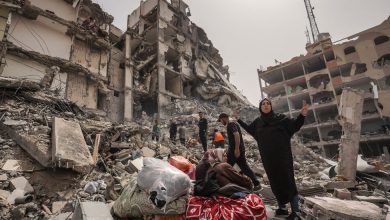For Minneapolis Police, Change Comes Slowly

MINNEAPOLIS — It was a searing example of a police department hitting rock bottom: a veteran police officer murdered George Floyd, a Black man, on a busy street in broad daylight and set off racial justice protests around the globe. Minneapolis promised to set an example. “Changing the world starts here,” Mayor Jacob Frey wrote in an opinion essay.
In the two years since, the mayor has ordered a host of policy changes to rein in the police, including banning chokeholds, restricting no-knock warrants and traffic stops and stepping up discipline for misconduct.
But the department has repeatedly been caught violating the mayor’s edicts — killing a man in a no-knock raid, using “warrior-style” training for recruits and, according to a new investigation, escalating encounters with the public to the point that the use of force is required.
Even as it tries to remake its police force, the city is grappling with the same crime spike as the rest of the country — violent crime in Minneapolis is up 36 percent this year over the same period in 2019 — and is combating it with an officer corps depleted by the coronavirus pandemic and low morale.
A mass exodus has brought the force from 881 officers before Mr. Floyd’s death down to 580, with applicants drying up. Scores of retiring officers have filed disability claims for post-traumatic stress disorder, receiving payouts averaging about $170,000 and suggesting that the department’s PTSD rate rivals that of Iraq war veterans.
Promises to increase accountability for officers who engage in misconduct have yet to produce visible results. In March — after officials had repeatedly vowed to dismantle police union protections for accused officers — the city approved a contract that raised officer pay but scarcely altered the disciplinary process.
In 2020 and 2021, 68 officers left the force while disciplinary action was pending against them, effectively closing those cases before they became public and leaving the city open to charges that it was doing little to punish officers who seemed to be targeting journalists and peaceful demonstrators in the protests that followed Mr. Floyd’s death.
The department has become a living testament to the difficulty of meaningful change, even of the symbolic kind — the Third Precinct building, set ablaze during the unrest of 2020, remains an unoccupied shell surrounded by razor wire, its fate undetermined.
Mayor Frey promised that the city would do more, but said it had run up against officer protections enshrined in state law and the difficulty of eradicating long-held attitudes on the police force. The city says more officers have been disciplined in the past two years than in the previous four.
“I’d put our record in terms of change and reform up against most any other,” Mr. Frey said. “Now, that doesn’t change the culture, though.”
The interim police chief, Amelia Huffman, who has been on the job since mid-January, said she was overhauling academy training, rewriting the disciplinary code, revamping the field training officer program and planning an added layer of review when officers use force.
“The only thing that really is holding me back from doing that immediately is staffing,” she said. “To create something new now means taking people from either the street or investigations.”
Many community members said they have grown disillusioned with local efforts at a policing overhaul and were awaiting the outcome of an investigation by the U.S. Justice Department, which is expected to lead to a consent decree that would force the Police Department to enact changes, such as correcting racial disparities and excessive use of force, under court supervision. The Minnesota Department of Human Rights, which conducted its own investigation of the department, also plans to seek a consent decree.
The state investigation found a current of racism and disrespect for the public that it said continued well after Mr. Floyd’s death on May 25, 2020, when he was handcuffed and pinned to the ground under the knee of Officer Derek Chauvin, who is white, for more than nine minutes. Three other officers were on the scene, two of whom helped hold Mr. Floyd down.
For nearly a year afterward, despite pledges to end race-based policing, the department used covert social media accounts to surveil Black leaders in the city, the investigation found. At the police academy last year, trainers used racist tropes in training exercises and eliminated existing lessons about dealing with communities of color, the investigation found.
As protests broke out in the city in the days after Mr. Floyd’s murder, two officers were caught on camera punching and kicking a prone Black man. None of the other officers present appeared to intervene.
Perhaps no other case has captured the shortfall between promises and outcomes more poignantly than that of Amir Locke, a 22-year-old Black man who was shot to death by a Minneapolis police officer in February during a no-knock raid — conducted in search of another man — in the early morning. Mr. Locke was asleep on the couch with a handgun.
During his re-election campaign last year, Mr. Frey claimed to have banned the use of no-knock warrants, which allow the police to make such entries unannounced. In the public outcry over Mr. Locke’s death, it turned out that the mayor had not barred officers from obtaining no-knock warrants but had begun requiring them to announce themselves before entering even if they had one. The video of the Locke shooting showed officers calling out “Police!” as they crossed the threshold.
After the shooting, the mayor revamped the no-knock raid policy yet again, this time requiring a 20- to 30-second waiting period before entry that makes it one of the most restrictive in the country, according to DeRay Mckesson, the executive director of Campaign Zero, a group focused on reducing police violence, which helped craft that policy and others.
Karen Wells, Mr. Locke’s mother, said she had taken her son years ago to a rally in Minneapolis for Trayvon Martin, whose death after being shot by a neighborhood watch captain in Florida in 2012 birthed the Black Lives Matter movement.
She said she had spent years drilling lessons into her sons about how to interact with the police: Don’t wear your pants in a saggy fashion; always have money in your pocket, so no one can accuse you of stealing; keep your hands on the wheel and be polite if you are pulled over.
But a decade after Trayvon Martin’s death, she said, the streets of Minneapolis were filled with people protesting her son’s death at the hands of a Police Department that had promised to do things differently.
Her son, she said, “is now the face of the lack of police reform.”
Nekima Levy Armstrong, a civil rights lawyer who co-chairs the mayor’s Community Safety Workgroup, all but offered her resignation at a news conference after Mr. Locke’s death. “What we are seeing is business as usual,” she said then.
Since then, she has continued with the group, saying she would not abandon work she has done for years just because others are not following through. She said she never expected change to happen quickly.
“I haven’t seen that many police departments that suddenly get their act together after a major incident happens,” she said. “That might be the expectation, but I don’t understand that expectation, with how these police departments have operated.”
On a recent Friday night, Officers Maiya Cain, 25, and Elise Hinderliter, 27, answered a call to a residential building in downtown Minneapolis. A 12-year-old boy stood at the lobby door, urging them to hurry.
He had shot his 10-year-old brother in the chest with his father’s gun, apparently by accident. Officer Hinderliter, an emergency medical technician, patched the wound and tried to revive the boy, then rode in an ambulance with him to a hospital, where he was pronounced dead. The older brother huddled in a chair in the apartment lobby, moaning and clutching at his forehead.
Though not a street crime, the shooting was part of a wave of gun violence that has swept Minneapolis and many other cities over the past two years, shifting public attention away from overhauling the police.
Still, the two officers said they had attended trainings in de-escalation and handling people with mental health or drug-related issues since Mr. Floyd’s death. Their computer screen showed another change: some calls were marked “B.C.R.,” for behavioral crisis response, an alternative to police intervention that the city has been piloting.
The department has been criticized for the paramilitary structure of its training program on the grounds that it discourages officers from questioning misconduct by other officers. But Officer Hinderliter had a different take: “I think that it’s structured in a way that sometimes you need to learn to be respectful and humble in this job, because you have a lot of power.”
Minneapolis is the most scrutinized city to try to rein in policing after Mr. Floyd’s death, but far from the only one. States have passed laws that require de-escalation training, body-worn cameras or early warning systems to identify problem officers. At least six states and four cities have limited the use of no-knock warrants. Dozens of police departments have adopted limits on chokeholds and neck restraints — dangerous subdual tactics that have resulted in fatalities.
But police unions and some law enforcement leaders have resisted changes that they say would weaken their ability to retain officers and fight crime. Rising violence across the country has increased their leverage. Law enforcement objections helped roll back measures, passed by Washington State in the wake of Mr. Floyd’s death, to improve police accountability and restrict the use of force, and stalled a bill in Minnesota that would have required officers with PTSD to try treatment before being awarded a disability pension.
In Aurora, Colo., where Elijah McClain died after a violent encounter with the police and the department is under state oversight because of a history of racist policing, the change-minded police chief blamed opposition from the union when she was fired.
The challenges have come at the federal level, too, as a bill named after Mr. Floyd that would have limited the use of chokeholds and no-knock warrants by federal agents and stepped-up discipline for police misconduct failed in Congress last year — torpedoed by both law enforcement objections and proponents who had wanted it to do more.
President Biden was expected to sign an executive order on policing on Wednesday, the two-year anniversary of Mr. Floyd’s death, that directs federal law enforcement agencies to revise their use-of-force policies and creates a national registry for officers who have committed misconduct.
But Minneapolis residents said there was still a deep disconnect between officers and the community. Many complain that officers often fail to respond to calls or refuse to take action when they do. And there is a widespread sense that officers still mistreat people with impunity.
Alicia D. Smith is the executive director of the Corcoran Neighborhood Organization in south Minneapolis, which fields a team of violence interrupters, among other services. She envisioned a scenario in which the community could fire officers who were repeat offenders, and rookies spent a year working in community centers, parks and schools before they put on a badge and gun.
“The progress will come from a literal overhaul by community of what the police look like right now and who is in the rank and file,” she said.




